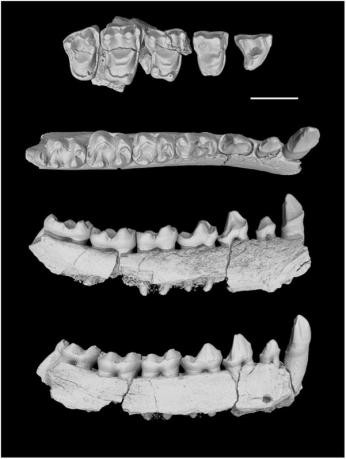Discovery of New Chinese Fossils Sheds Light to Primate Evolution
| Ellie Froilan | | May 05, 2016 11:40 PM EDT |
(Photo : Reuters) The new fossil discovery offers a deeper understanding of a crucial moment in the evolution of primates that eventually gave rise to people.
A team of paleontologists unearthed the remains of six previously unknown extinct primate species in southern China, strengthening the evidence that primates first emerged in Asia.
The fossils demonstrate how primate diversity in Asia changed with the climate at the end of the Eocene epoch.
Like Us on Facebook
During the Eocene, the world's climate was in a greenhouse state. Primates thrived across many regions, including Europe, North America, Asia, and Africa during this era. After epoch, Oligocene came. The transition became bad. Earth's atmosphere rapidly cooled. Asia's colder, drier climate was behind the extinction of primates in many regions. Those that survived clustered around the equator or in the tropics, in Africa and Asia.
“We have so many primates from the Oligocene (approximately 34–23 million years ago) at this particular site because it was located far enough to the south that it remained warm enough during that cold, dry time that primates could still survive there. They crowded into the limited space that remained available to them,” said K. Christopher Beard, senior curator at the University of Kansas' Biodiversity Institute and co-author of the report.
During the Eocene, many species of primates lived across Asia and Africa. Many members of both branches of primates, the strepsirrhines and the haplorhines, populated both Asia and Africa.
Beard and his colleagues Xijun Ni, Qiang Li and Lüzhou Li of the Chinese Academy of Sciences' Institute of Vertebrate Paleontology and Paleoanthropology describe the six new species from jaw and tooth fragments, which survived the ages because of their tough enamel surfaces and serve as fingerprints to identify ancient animals.
Of the six new species found at the Oligocene site in southern China, four are lemur-like members of the strepsrrhine lineage. One of the ancient Chinese primates is similar to the nocturnal insect- and lizard-eating tarsiers of the Philippines and Indonesia. The last species is an anthropoid, also a haplorhine and a member of the lineage that includes monkeys, apes, and our own ancestors.
The new discovery helps in explaining Asia-Africa story of primate evolution and a deeper understanding of a crucial moment in the evolution of primates that eventually gave rise to people. Full details of the research published in the journal Science.
TagsChinese Fossils, primate, Primate Evolution, Chinese primates, evolution of primates, monkey, human race, epoch
©2015 Chinatopix All rights reserved. Do not reproduce without permission
EDITOR'S PICKS
-

Did the Trump administration just announce plans for a trade war with ‘hostile’ China and Russia?
-

US Senate passes Taiwan travel bill slammed by China
-

As Yan Sihong’s family grieves, here are other Chinese students who went missing abroad. Some have never been found
-

Beijing blasts Western critics who ‘smear China’ with the term sharp power
-

China Envoy Seeks to Defuse Tensions With U.S. as a Trade War Brews
-

Singapore's Deputy PM Provides Bitcoin Vote of Confidence Amid China's Blanket Bans
-

China warns investors over risks in overseas virtual currency trading
-

Chinese government most trustworthy: survey
-

Kashima Antlers On Course For Back-To-Back Titles
MOST POPULAR
LATEST NEWS
Zhou Yongkang: China's Former Security Chief Sentenced to Life in Prison

China's former Chief of the Ministry of Public Security, Zhou Yongkang, has been given a life sentence after he was found guilty of abusing his office, bribery and deliberately ... Full Article
TRENDING STORY

China Pork Prices Expected to Stabilize As The Supplies Recover

Elephone P9000 Smartphone is now on Sale on Amazon India

There's a Big Chance Cliffhangers Won't Still Be Resolved When Grey's Anatomy Season 13 Returns

Supreme Court Ruled on Samsung vs Apple Dispute for Patent Infringement

Microsoft Surface Pro 5 Rumors and Release Date: What is the Latest?












